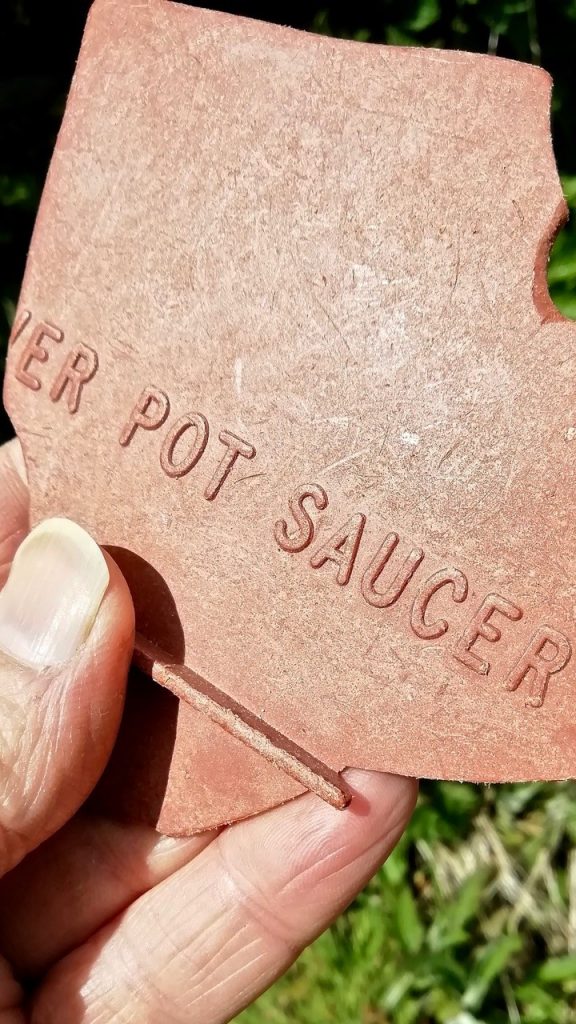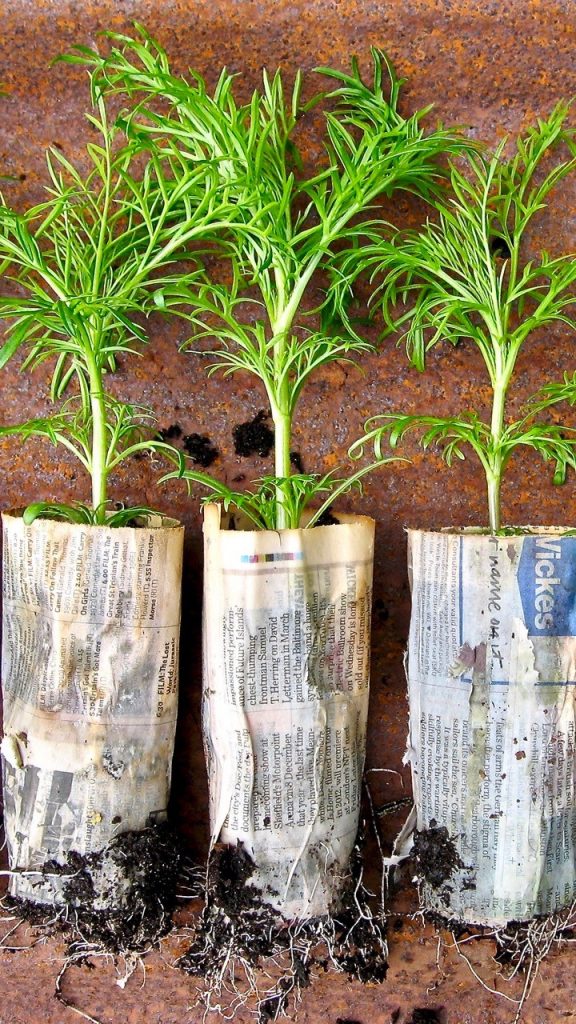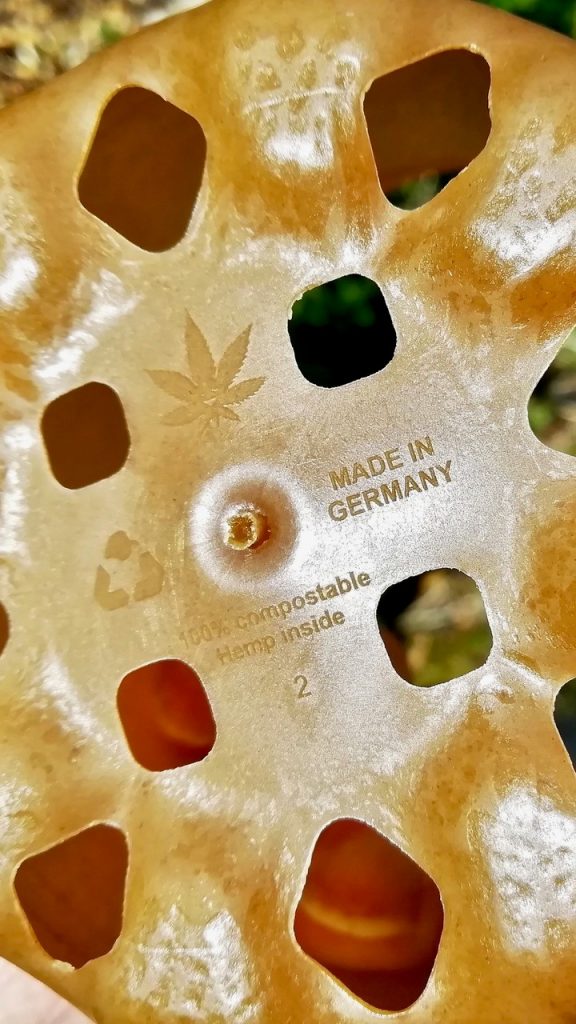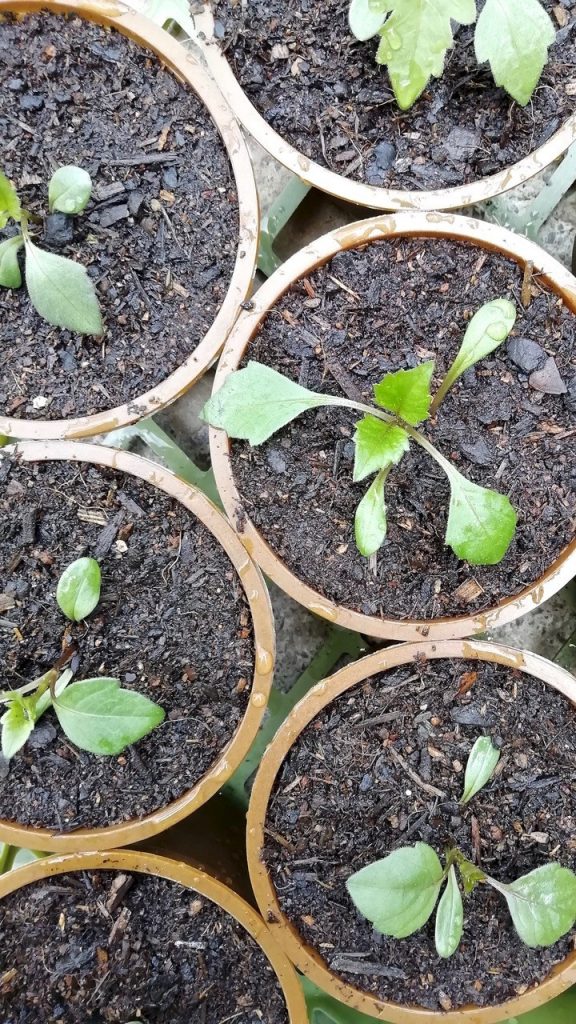It’s time to look beyond plastic – there’s a new pot on the plot that promises pollution-free planting.
If gardening wants to get serious – and I mean serious, not just some fluffy padding that fills a few column inches now and then in glossy magazines – about its darker side, the one that blights and pollutes our natural world, then it needs to jump free of the horticultural hamster wheel in which we’re all caught. This ever-spinning trap is driven by the enduring fantasy that when things go wrong – like they have with plastics – we can put them right through harnessing – sigh – the power of ‘market forces’.

Yes, we garden-loving consumers should flex our collective buyers’ muscles, change our behaviour, get informed, sign petitions, rant on social media, and make ‘better choices’ to turn bad situations around. Only when each one of us sends our individual ‘signal’ to ‘the market’ will businesses search for fresh (and profitable) opportunities, and give us what we now demand! Only then will they listen and stop flooding our gardens and greenhouses with all the stuff that’s causing the problems in the first place: peat (climate breakdown), plastics (microplastics), pesticides (ecosystem pollution)… the list goes on.
Only it doesn’t work, and it’s never going to, as long as gardening manufacturers and retailers keep spinning in their own fantasy wheel – the one which absolves them of any responsibility for putting right the harm done by the stuff they make and sell. Instead, that responsibility is dumped on all of us as individuals, to get flexing and – cue extra-weary sigh – change the market.
The bizarre notion that it’s down to all of us to fix the bad stuff festers at the core of free-market economics, and it’s getting us gardeners nowhere – just when gardening, en masse, needs to be getting, pronto, to a greener, more ecologically sound and sustainable place. But on one front at least – global plastic pollution – there are encouraging, genuine new solutions appearing, fuelled by – you guessed it – plants themselves.
We’re drowning in plastic plant pots; they’re turning up everywhere, either whole or, worse, in bits, which break down into ever-smaller bits, until they become invisible microplastic pollution. On a recent seaweed-foraging trip, I unearthed a beautifully sand-etched, sea-smoothed fragment of a plastic pot saucer. Ironically, plastic pots are themselves made from plants – but those plants lived millions of years ago, powered by ancient sunshine, before decaying into the earth to become the crude oil which we use today to make plastic products, like the pots that sully our lives after jumping the garden fence.

Plants powered by today’s modern and renewable sunshine can be used to make pots that rot, ones that break down and decay into nothing but soil-boosting organic matter, incurring zero waste or pollution. The simplest are those we make ourselves from newspaper (wood pulp from trees), using either a wooden ‘pot maker’ or a tin can, bottle or other cylindrical object. DIY paper pots are time-hungry, but incredibly therapeutic to make. They’re short-lived and rot away to nothing (ditto for toilet roll tubes), so are ideal for young plants that will be planted out.
Ready-made pots made of natural plant fibres (wood or paper pulp, or coir) can readily be bought. Check they are labelled peat-free; if they don’t clearly state they are, don’t buy them, and don’t be fooled by ‘biodegradable peat’. As with paper pots, pollution from these is zero (aside from possible packaging waste); if they should escape to a beach or hedgerow, they’ll not last long and, unlike plastic debris, won’t be around centuries from now. Again, these rottable ‘biodegradable’ pots are ideal for transplanting into soil or containers.
We greenhouse gardeners often need bigger pots that don’t rot, to grow a whole range of different plants, some of which will stay in them permanently. This is why plastic plant pots are winners; they go on and on and on, lasting indefinitely if you keep them in the dark when they’re not being used (the moment they do become brittle and crack, you need to recycle them, if you can, or bin them, so they don’t shed plastic shards into the environment).
So, for now, we need to make peace with plastic pots and put them to good use; every pot reused is a new one not bought. Non-plastic, plant-material-based pots that claim to do as good a job as plastic have come and gone; the few that remain are often heavy, expensive and with dubious ‘biodegradability’ credentials.

But there’s a new plastic-free pot on the block, made from 99% renewable plant fibres (powered by today’s sunshine), that I can’t wait to get potting into. It’s strong and solid, looks good, is vegan-friendly, is similar in weight to a plastic pot, and is completely biodegradable, leaving no residues. The pots only rot away when they are in contact with the soil (the whole pot can be planted to avoid upsetting roots), or are added to a compost heap/bin. These German-made pots are also compatible with the potting machines used by commercial plant growers. They could be a gardening game-changer.
What gives the HANFi pot real promise is that it is made almost entirely from hemp fibres. Hemp is a widely and easily grown crop with a multitude of uses – medicine, food, cosmetics, paper, clothing, cleaning products, insulation – which requires no fertiliser or pesticide inputs, and is beneficial for insects. Hemp sucks carbon from the air, storing it in its fibres, and its deep roots break up and improve soil.
For now, these renewable and truly earth-friendly pots can’t compete with plastic on price; my pack of 10 cost £13.50, about half of which was shipping (from Austria, so they did clock up some ‘pot miles’). At 12cm in diameter, they’re a useful all-round size, and I’m guessing that, although they can be planted in soil, they’ll also be reusable for a good few years if they stay above ground. In the UK, you can buy them online here, and I hope you’ll give them a whirl (you know you want to).
Will our collective gardening buying power be enough to give ‘the market’ a seismic enough nudge to oust all plastic pots from retailers’ shelves? Will a keen, yet modest, number of us buying these non-polluting pots, crafted from plants growing today, send a loud enough signal to ‘the market’ that hemp is the new plastic, and that we want more of it? Of course not, on both counts. We can send a quiet, affirmative signal by buying and trying these pots ourselves – and by spreading the word about why they promise a massive leap toward ecologically attuned gardening that does no harm and leaves no pollution in its wake. But it’s not us gardeners who must take the biggest leap of all.

To send plastic pots (and much other plastic gardening gubbins) packing, once and for all, manufacturers and retailers must jump free of their own responsibility-ducking fantasy wheel. Solving some of gardening’s biggest problems is on them, not on each one of us. It’s up to them to do the right thing and stop selling stuff that pollutes and harms our natural world; they don’t need us to make a million better choices to force them to clean up their grubby act. It’s high time for them to step up and act responsibly.
They don’t need us to explain that a pollution-free plant pot made from renewable hemp fibres is light years better than a polluting plastic one. They don’t need us to tell them to inform their plant suppliers that they only want plants grown in potting-machine-compatible HANFi-type hemp pots (using peat-free compost). They shouldn’t need us to point out that what their customers then load into their shopping trollies won’t risk soiling our streams, rivers, beaches and soils for centuries to come.
Some stuff has gone seriously wrong in gardening, and it’s time to put it right. We must start by ditching seductive, free-market fantasies about how change is driven by better consumer choices and ‘behaviour change’ – it isn’t, in any meaningful way. We customers can help shine a light on gardening’s darker side, but serious, pollution-busting and plastic-freeing change can only come from those whose job it is to help us realise our plant-growing dreams.
We’re all waiting.
Text and images © John Walker
Find John on Twitter @earthFgardener










